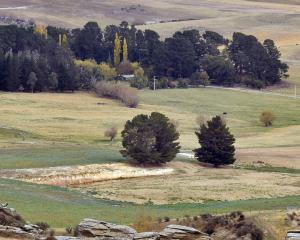
Computers crashed in businesses and services around the world as the result of a flawed software update from CrowdStrike, a United States cybersecurity company which supplies software used by many large organisations and government agencies to protect them from hackers.
New Zealand, while not unscathed, appears to have got off more lightly than some other countries where air travel ground to a halt, shops closed, hospitals cancelled surgeries and emergency response and public transport, banks, news organisations, and infrastructure were affected.

On Friday night the National Emergency Management Agency was called in as a precaution.
Fortunately, there was not a national emergency, but the event, which is not over yet in many organisations, highlights the fragility of the security of global information technology (IT).
It also demonstrates suggestions that cash is passe are foolish.
The CrowdStrike error has not been quickly remedied in some large organisations, according to reporting from the New York Times, because the faulty code caused the affected machines to enter an endless loop of reboots, taking them offline. That made it harder for CrowdStrike to issue a fix remotely. It meant each machine had to be fixed by a person manually removing the faulty code.
There will be detailed analysis about this event, here and abroad, and there are many questions which need to be answered.
Is it wise to have so many organisations and government agencies relying on protection from one provider? Although many of us may not have heard of CrowdStrike, it has been around since 2011, and is a big player in the cybersecurity business. It has about 29,000 customers in more than 170 countries, providing security software and investigating and tracking hacks.
How was it possible for such a firm, which people would expect to be ultra-cautious with rigorous processes, to send out a single flawed piece of software that could cause such instant mayhem?
There will also be the question of what financial liability CrowdStrike might face over the outages. As Dan Ives of Wedbush Securities told RNZ, "if you’re a CrowdStrike lawyer, you’re probably not going to see a beach this summer".
* * *
On a lighter note, or maybe a darker one, some recent research suggests if Artificial Intelligence (AI) turns bad and we need to head off the grid to survive, Arrowtown and Tangoio in Hawke’s Bay may be the best places to be.
NZCasino has analysed locations across New Zealand, Australia, the United Kingdom, and the United States to determine the best places to survive in an AI takeover.
We love to win, so the question of why an online casino review website promoting gambling decided to do this research is perhaps best left to AI. But the good news for New Zealand is that the research found more than half of the top 25 places to be in an AI apocalypse are here. Only one on that list was in the US.
The data crunchers awarded points to areas with no or poor cellular signal and access to natural water sources and farmland, along with the availability of renewable energy sources, such as solar energy, which would allow people to live self-sufficiently and off-the-grid.
The Takitimu Mountains, Rakiura National Park, Thornbury (Western Southland), and Waikawa Valley, in the Catlins, all featured in the top 10.
It might be wise for anyone near those locations to keep a lookout for American cybersecurity squillionaires bearing suitcases full of cash.












